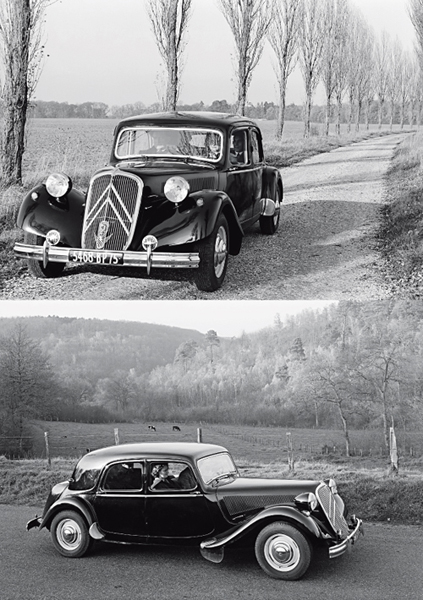André Citroën’s first business venture, at the age of 22, was making ‘chevron’ gears with special V-shaped teeth – still represented on the Citroën logo. A brilliant industrialist, engineer and financial gambler, Citroën (1878–1935) was intensely interested in industrial technique and in the methods of Henry Ford, which he saw in the United States in 1912. He was inspired by this latter experience to start and run a successful armaments factory in Paris during World War I.
After the war, Citroën returned to automobiles, arguing that the future did not lie with expensive hand-built cars (such as those of Mors, the company for which he had worked before the war) but with an affordable and reliable mass-market product. For him, the car was ‘not an instrument of luxury but essentially an instrument of work’.
Accordingly, he converted the munitions plant on the Quai de Javel for car production, assembling an extraordinarily talented team, including chief engineer André Lefèbvre (1894–1963), a graduate of the Ecole Supérieure d’Aéronautique who had previously worked for the eccentric aviation and auto pioneer Gabriel Voisin. ‘When you throw a hammer, it is the head, not the handle that travels first,’ Lefèbvre argued in support of front engines and front-wheel drive.
The new mid-range car, the Traction Avant, had front-wheel drive, remarkable roadholding, and excellent strength and durability. Moreover, it combined advanced French engineering with the latest US production techniques, for it was the Edward G Budd Company of Philadelphia, the great pioneer of chassis-less all-steel welded car bodies, that produced the press tooling and body engineering scheme to make it. How this collaboration was arranged in the age of the transatlantic steamer is a story that still needs to be told, but it produced the basis for the modern family car.

The body style of the Onze Léger, or ‘Traction’, respected the styling that was normal before World War II. However, its rigid pressed-steel body, weight bias to the front, and front-wheel drive made it the archetype of the modern mid-size European saloon.